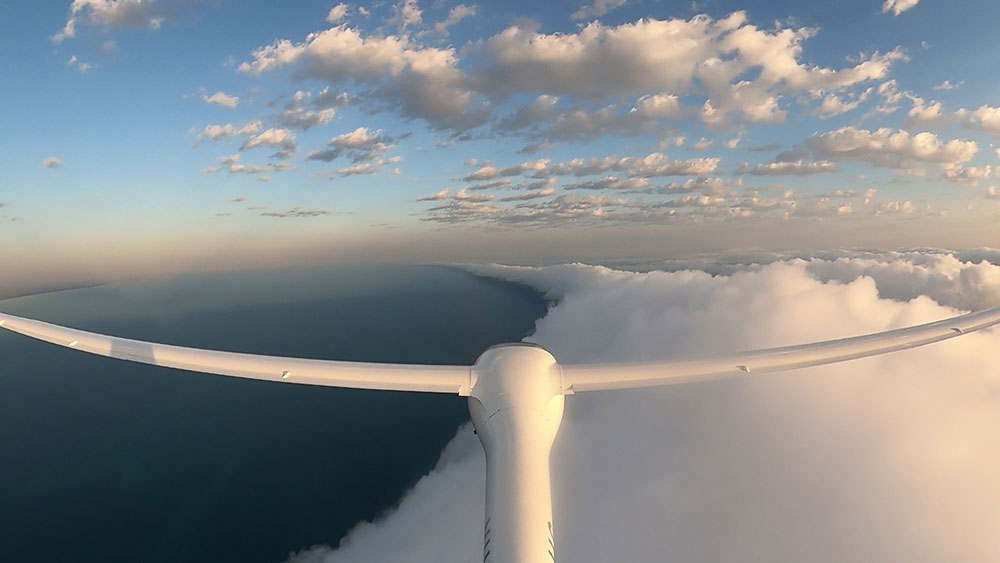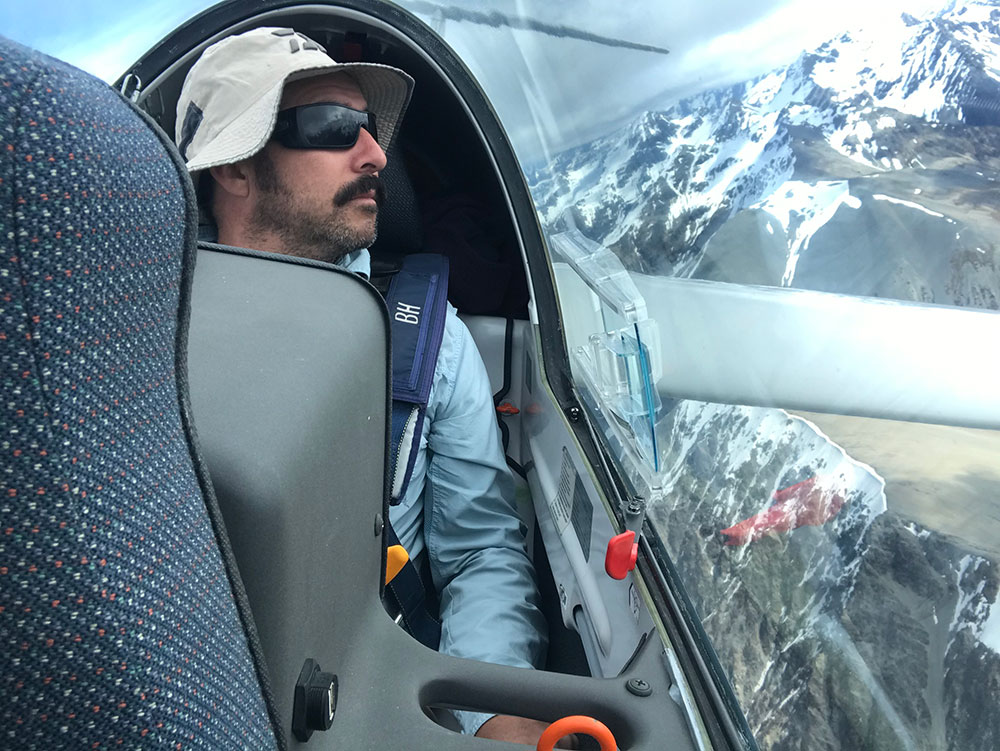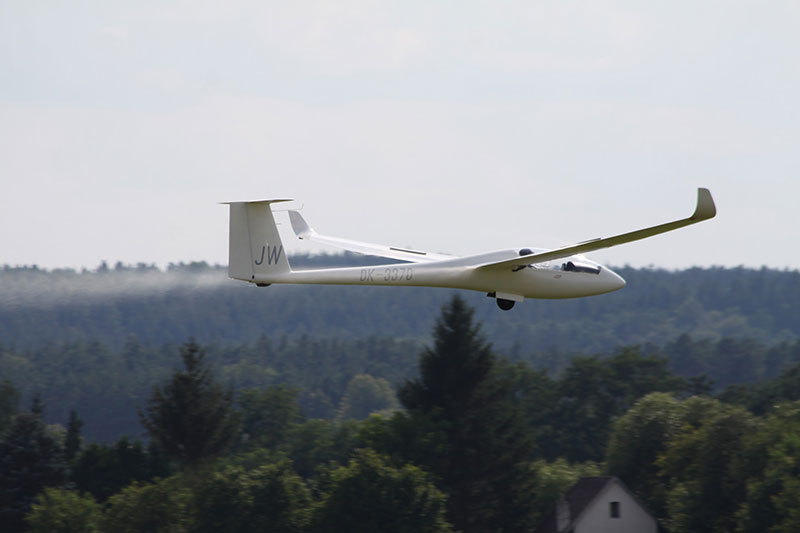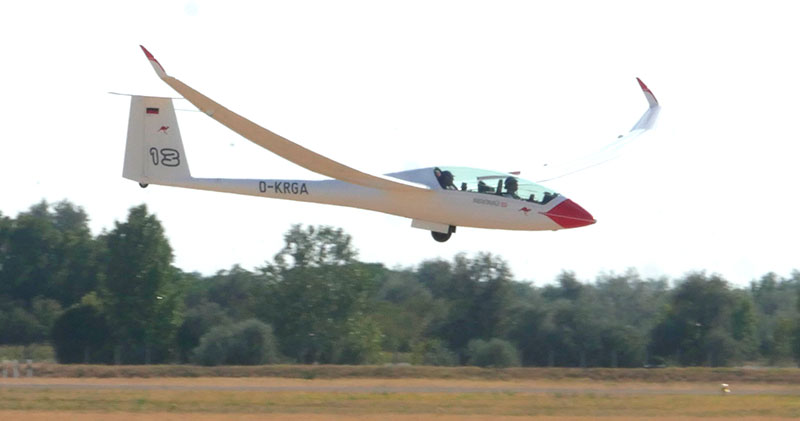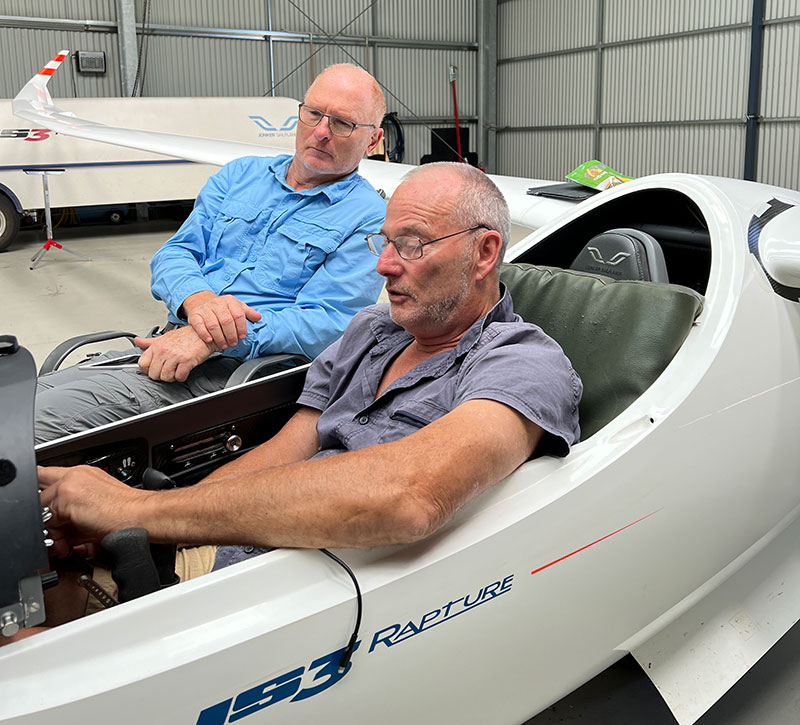
G Dale with Jacob Bloom.
By G Dale
A long time ago, I followed John Williamson from the UK out to Benalla in search of a 750 diploma. John – a competition pilot, coach and the inventor of the John Willy calculator – had clearly realised that the best way to escape the British winter was to go work for a gliding club in Australia, and it didn't take long for the idea to trickle down to his students. Of course, I also had terrific fun. I won't bore you with the stories.
So as soon as I was in a position to get away regularly – and if you're working in gliding in the UK, there's precious little to do in winter – I started coming out to Australia to coach, first for individual clubs all over the place, then for Keepit and now, for the last few years, I've been at Narromine.
It's been fantastic. Although my heart lies in the mountains, for flat land flying and especially for teaching speed flying technique, Narromine has been a good venue. It's an easy site to operate from, the local town is just big enough for a couple of good coffee shops, the weather is reliable (yes, I know the weather has overall been ghastly but we've been betteroff than many sites) and I get great support from Beryl, Arnie Hartley and Ross McLean. Between them, they make all the courses happen. I just turn up, get the glider out and go flying.

G’s Courses – Who, Why, How?
So, who comes on the courses and how do they work? Lots of private owners attend who, having invested a lot of money in their kit, understandably want to get the best out of it. I also find a high proportion of middle aged pilots who've been off away doing other stuff for the last 20 years -- raising a family, building a business and generally ‘having a life’, which is something I've generally avoided. The two groups have a big overlap.
Narromine also hosts courses for coaches, and facilitates coach-to-coach meetings and discussion sessions. I'm involved with helping put together the Diamond coaching syllabus at the moment, so there's plenty of synergy in this.
Generally, it's easiest for me, and I make the best progress with students, if I have them to myself, one-on-one in a Duo Discus for a week. Days 1 and 2 we spend getting to know each other's flying styles and rubbing the corners off the personal relationship. Coaching is pretty intimate when you're locked up in a hot sweaty little cockpit working hard for hours on end. However, most glider pilots are really easy to get along with.
By Days 3 and 4, we're making progress. It takes a while to unlearn old habits and it also takes a bit of time for students to relax and fly naturally. It’s hard when someone is looking over your shoulder all the time. By Day 5 we've probably had enough of each other and it's time for a break.
Sometimes, I have two or more on a course. It's a little more difficult but bear in mind that a coaching flight doesn't need to be very long, so I often do two sorties in one day. There's rarely time for more than that. Meanwhile, the second or third pilot can go and practise solo, often coming along with the Duo around the same task. It works well to have several pilots tackling the day's conditions and trying to work out what's going on. We have more interesting briefings and debriefings when there's more than just the two of us.
Making Sense – Not Mistakes
What do we cover? I usually start off with an introduction to human factors. My own slant on this subject centres on how one learns to cope with a performance environment. This means that when you're flying a glider, you can't stop and read the manual or take time out to look something up. You can't take a break. If you make a mistake, life just gets harder still: the more mistakes you make, the more difficult the task becomes, and therefore, the more mistakes you make. This process can result in poor decisions (yep, I've made a few) and bad outcomes (and again, done that, too). It's vital that a pilot can organise his workload and therefore, manage his arousal level. This sets the scene for the work to come.
As soon as I get in the air on the first day, I usually I find that my student can't climb properly. Sorry, but there it is. Flying with a coach adds to the stress but even so, many pilots can't turn the glider accurately at 45 degrees of bank. Also, most pilots think that the vario tells them when the glider is going up, which it doesn't, at least, not well enough to direct you into the middle of the thermal.
Between these two problems lie a number of more or less faulty centring techniques. All cross country flying depends on a pilot's ability to fly the glider in tight little circles in the middle of the thermal. Once we can do that, then everything else starts to make sense – we can stay up, make progress, begin to understand the sky, and discriminate between good and bad thermals, fast and slow skies, difficult and easy situations.
If, on the hand, a pilot can't climb properly, then he can't even start on the rest of it. So we do a lot of circling work! This, in turn, often leads onto the subtleties of handling two-seat gliders in tight turns. They are significantly more difficult to fly than single seaters, and the conversion process takes a little time.
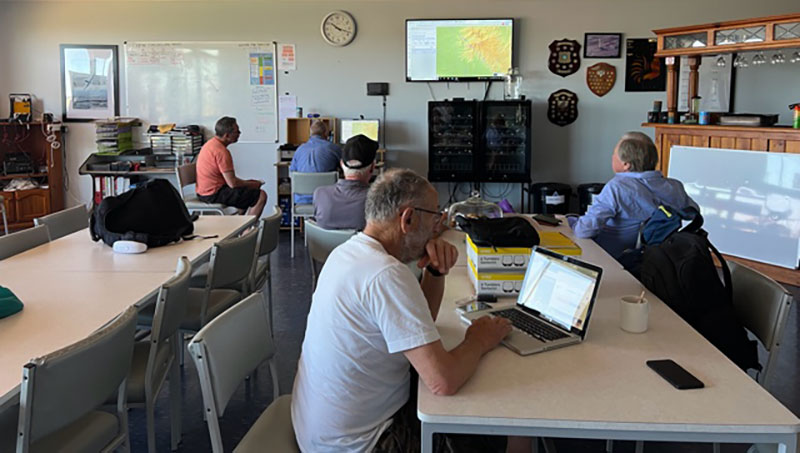
The clubhouse at Narromine Gliding Club
Speed and Rate of Climb
Speed flying, the great gambling game of cross country flying in thermals, is the next area. The theory looks complicated but remember – only three things are important about cross country technique: rate of climb, rate of climb and...yep, rate of climb. However, we have to understand the theory in order to understand the importance of climbing fast, and how thermal centring and selection are the foundation for all the other components of speed flying.
Now, I'm not as fast as some, but I've written up a solid and reliable speed flying technique which is teachable, learnable and repeatable. I'm pretty proud of that and, combined with the centering practise, this usually comprises 90% of the course work. It helps a lot if the students have read through the material first. Everything I teach is down there in volumes 1-4 of ‘The Soaring Engine’. Having written the books also makes life a lot easier for me. I don't have to think too hard about the material, just about teaching it, and this becomes very relevant when thrashing through the merits of using water ballast or explaining how the circling polar works.
A Working Day
What about the flying? We don't need great weather and we don't have to fly long distances. Enormous booming thermals and huge long distance flights are great fun but a bit outside my remit. I'm trying to teach cross country technique, not show off with big scores on the OLC, so I'll usually keep the flights reasonably short, usually only three or four hours at the most. This gives us time in the morning to brief, time in the evening to debrief, and not so much time in the air that everyone gets worn out. Most students are toast after a couple of hours anyway. They work hard.
So we're not after long flights, but I need to get the following elements into a sortie - the launch and release – there’s always stuff to work on there, the pre-start phase, doing the start, a couple of legs, a couple of turn points, a final glide and a safe arrival back at base. Each of these segments introduces many different teaching points.
If the weather is poor, we can do all the flying elements without going too far out of gliding range of the local airfields. Landing out is fun and a skill in itself, but generally I avoid it like the plague. We have too much stuff to fit into the week to want to spend time retrieving. That's for when I'm goofing off having fun in my own glider.
Intense, Focussed and Fun
So all in all, it's a reasonably intense and focussed week of work. It’s fun, but a genuine training camp rather than just a few tasks and a bit of chat. At least, that's what I'm aiming for.
This has been a little introduction to the soaring courses. I'm planning to be back again in Spring ‘23, and at the same time I'm working on restarting as a mountain soaring coach at Omarama in New Zealand. That's a completely different ball game but still relevant to Aussie pilots, as the best mountain flying in the world is just a short flight away.
If you're interested in coming to Narromine, look on the club website for information. If you want to come fly in NZ, then you'll have to contact me directly. Finally, if you want to know more about cross country techniques, then read ‘The Soaring Engine’ volumes.
That's all for now but watch this space – I'll be back.
Safe soaring G




























